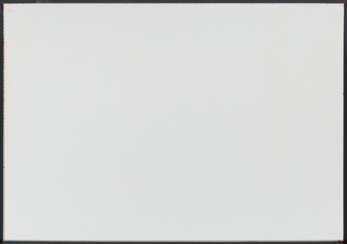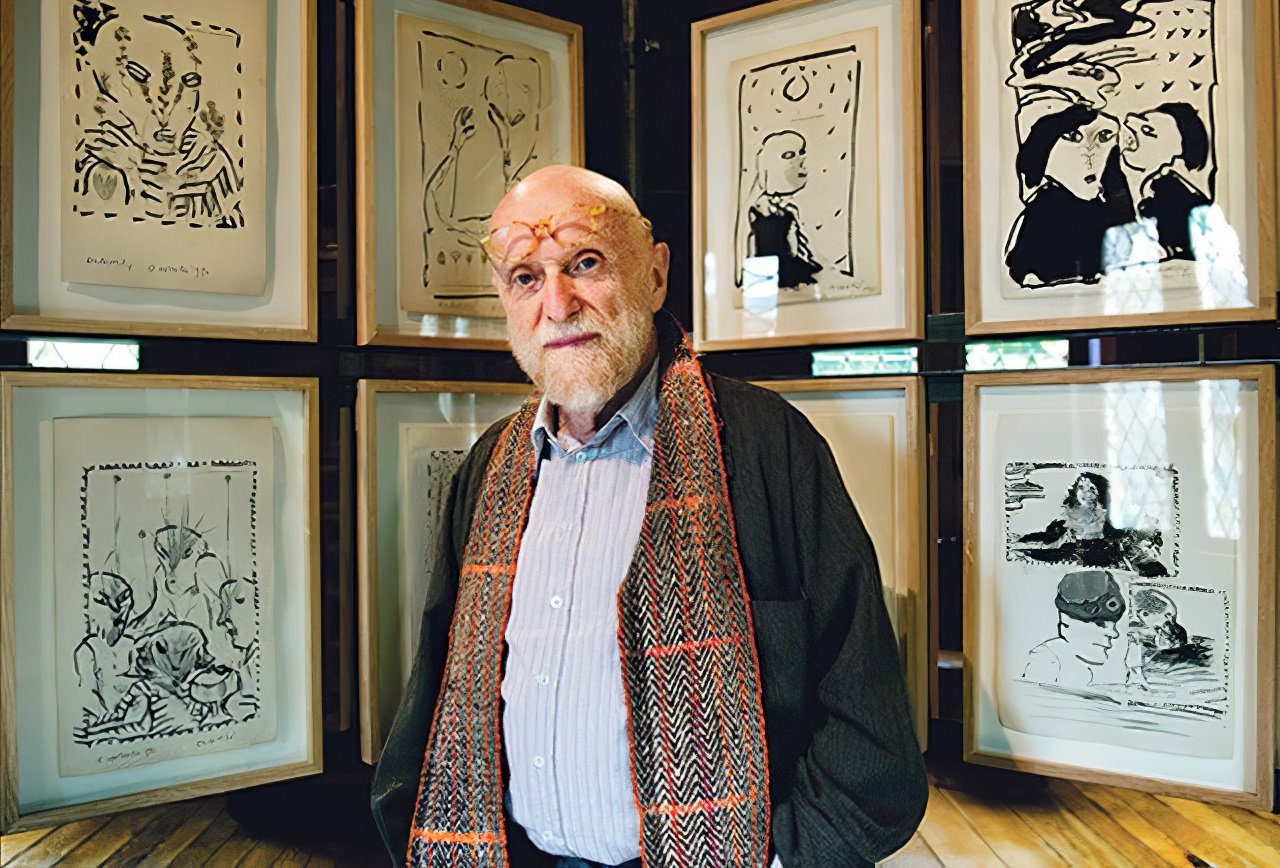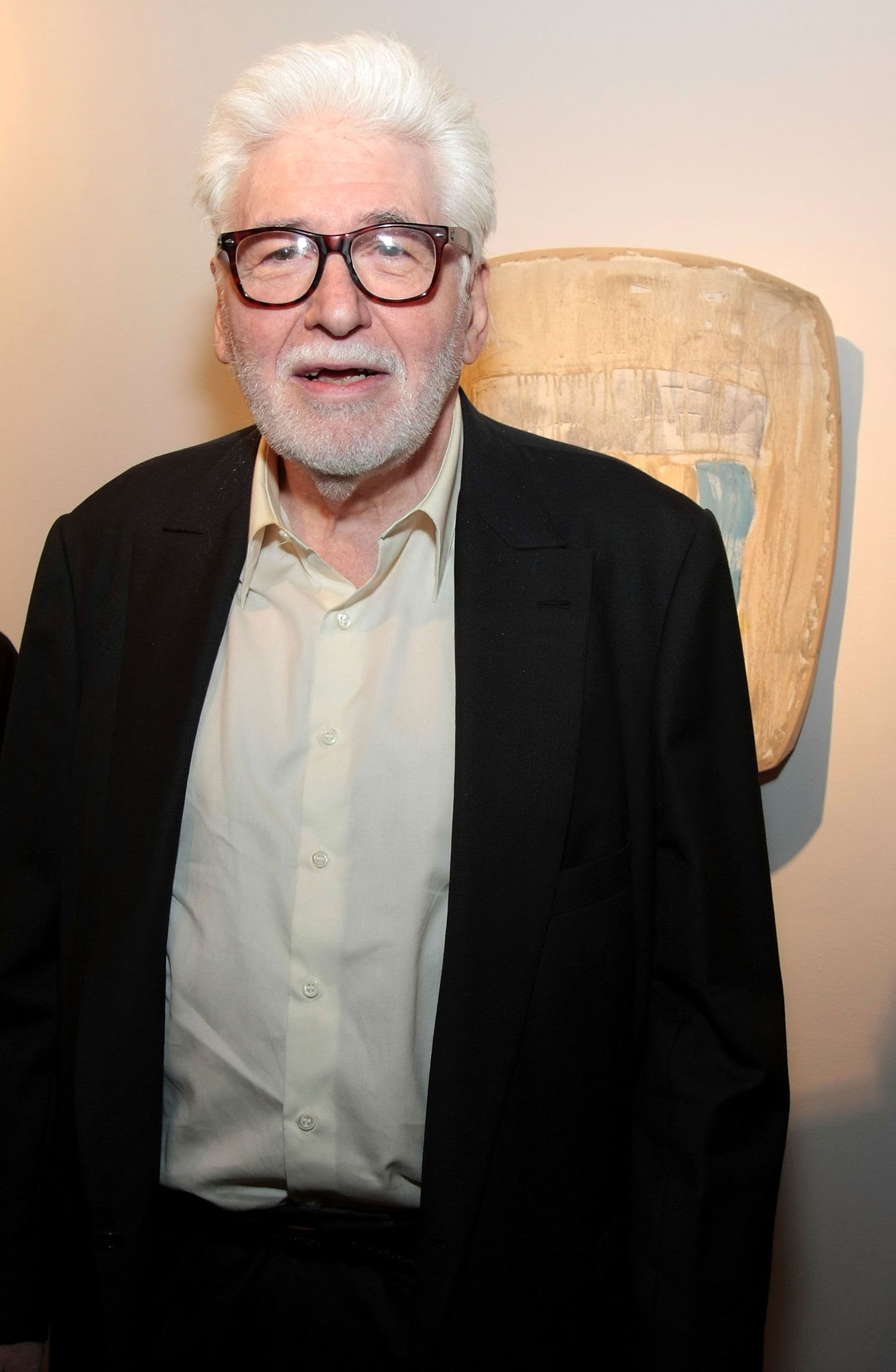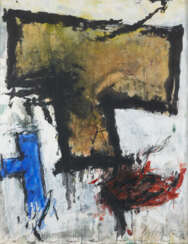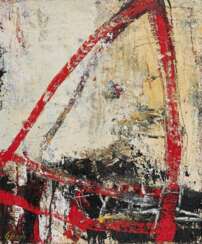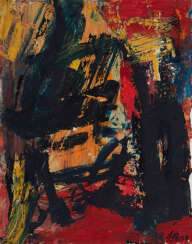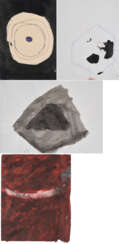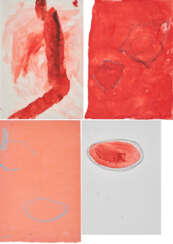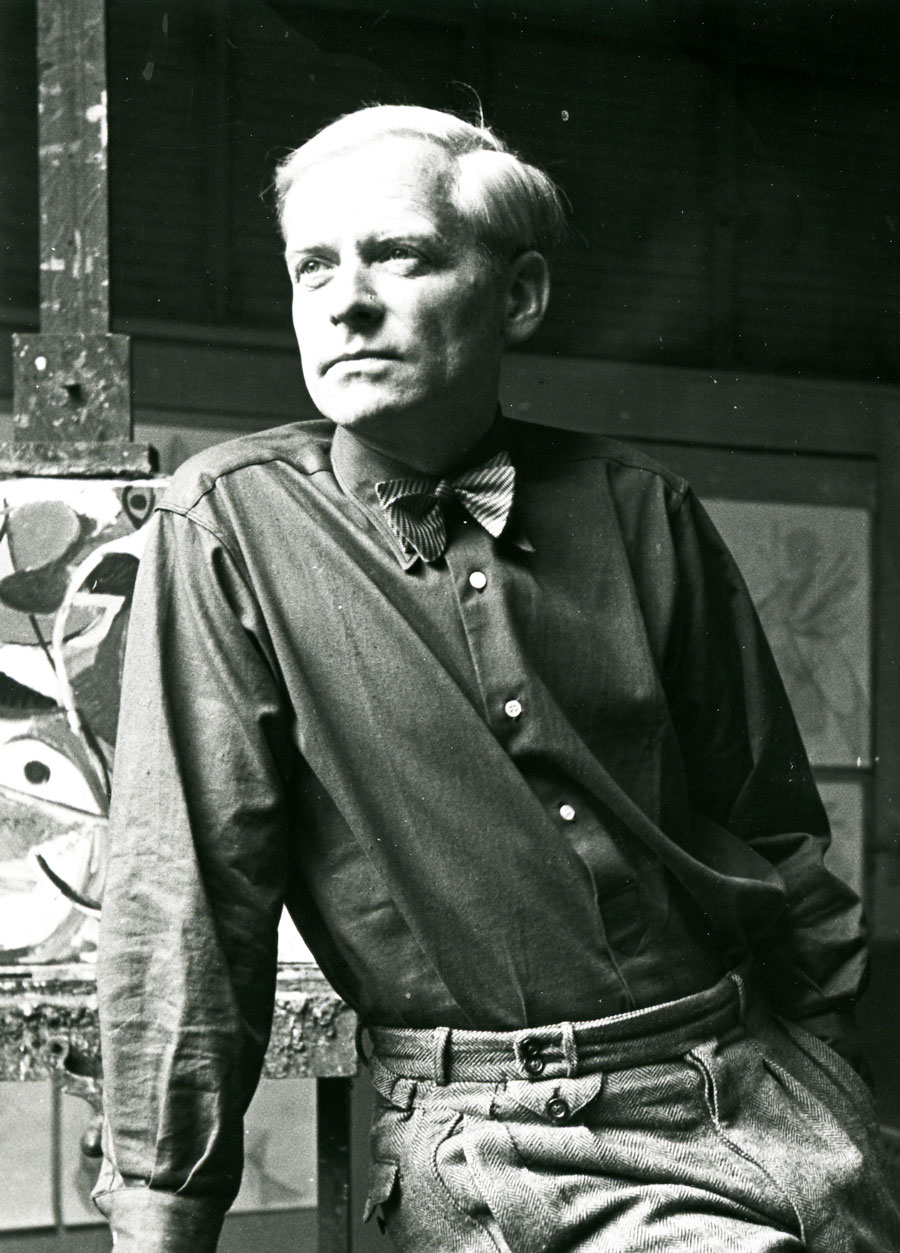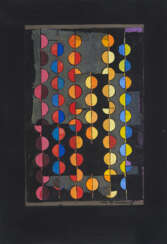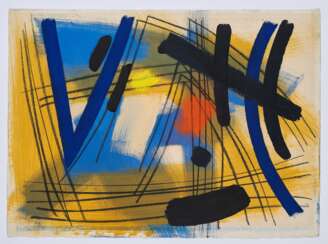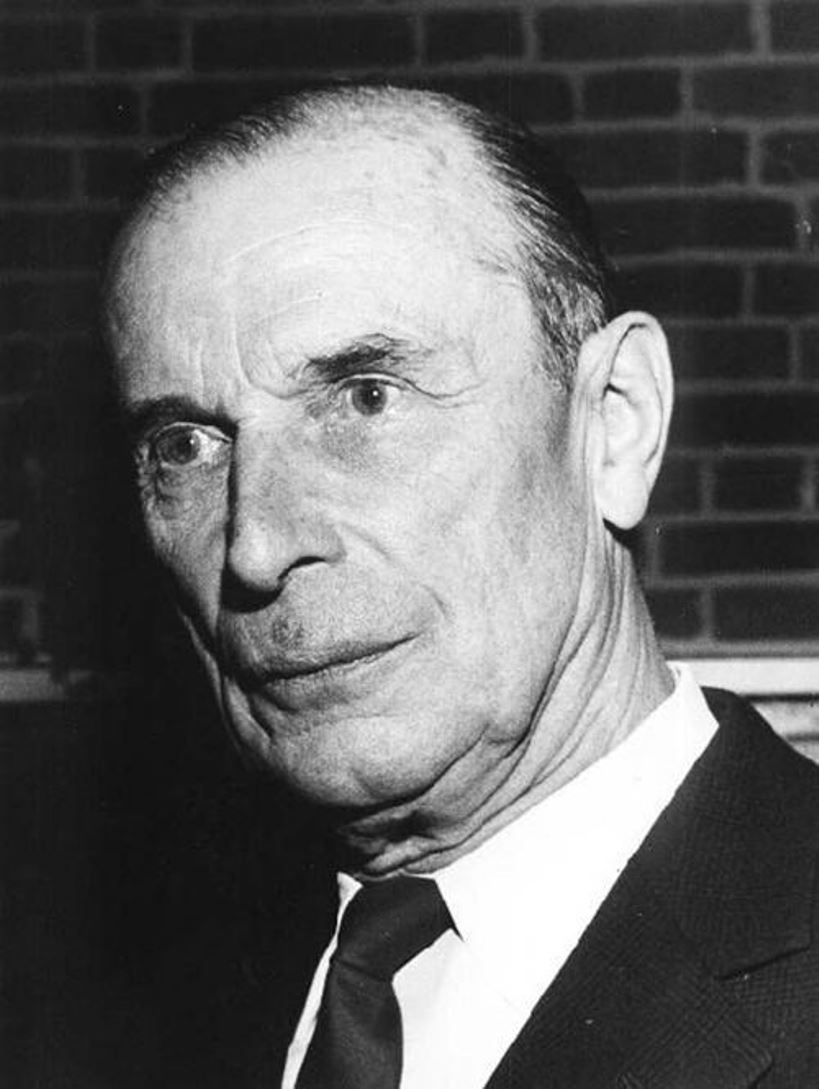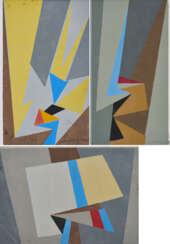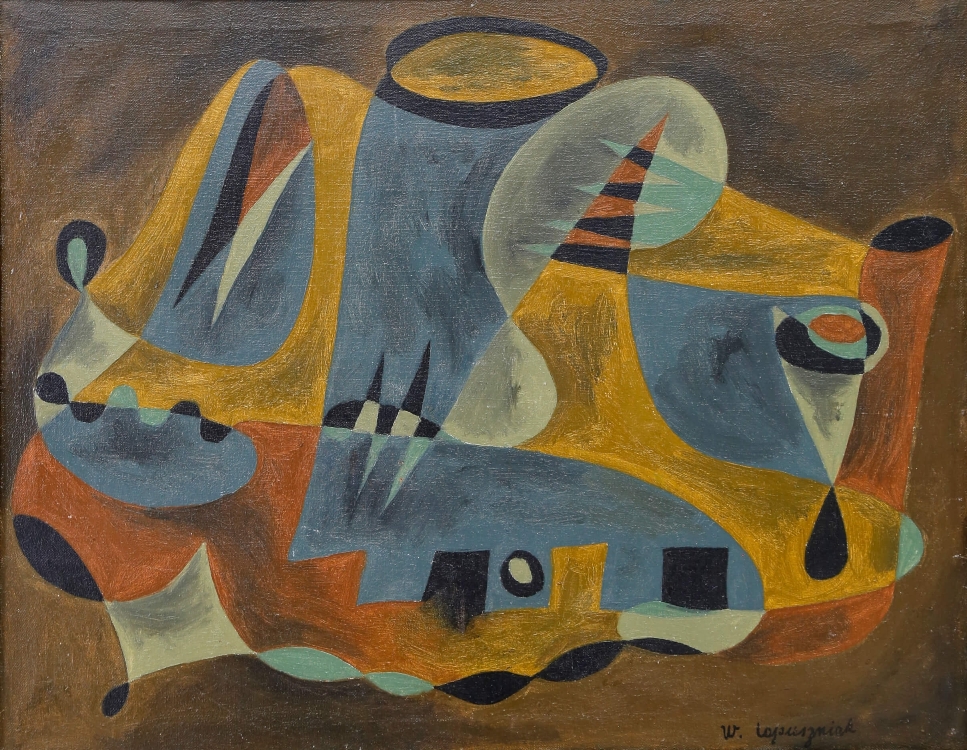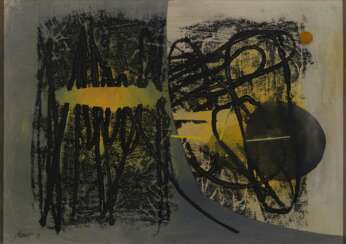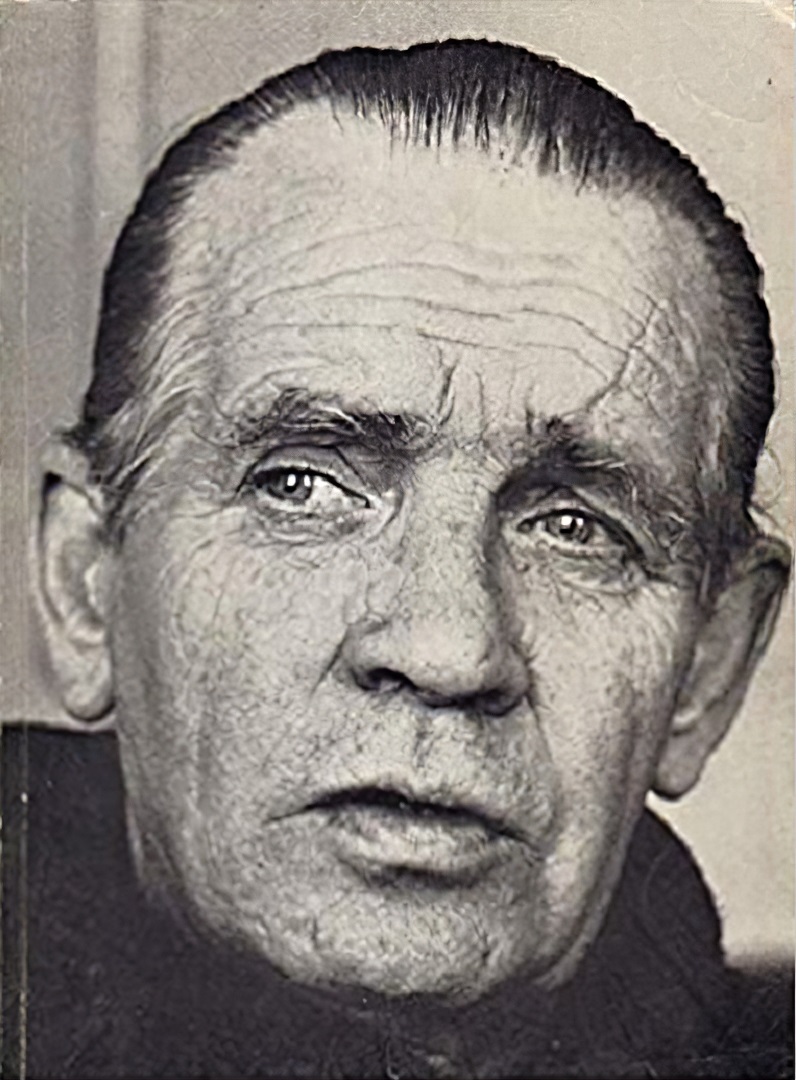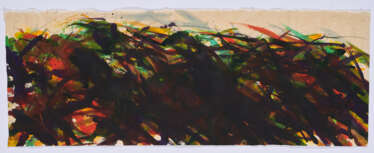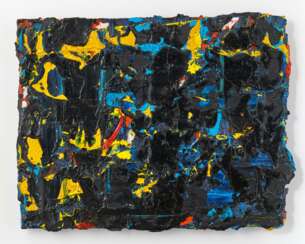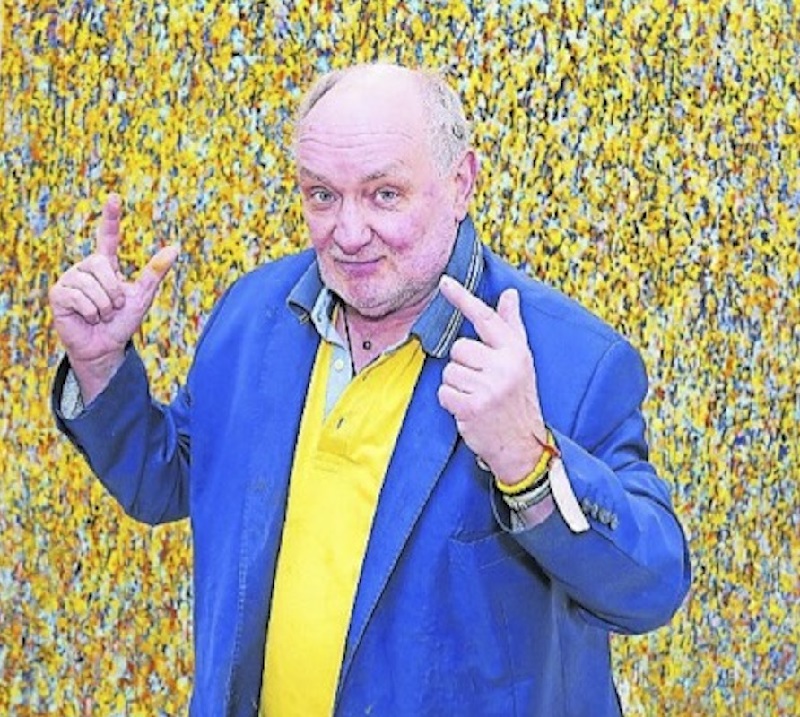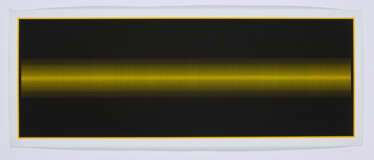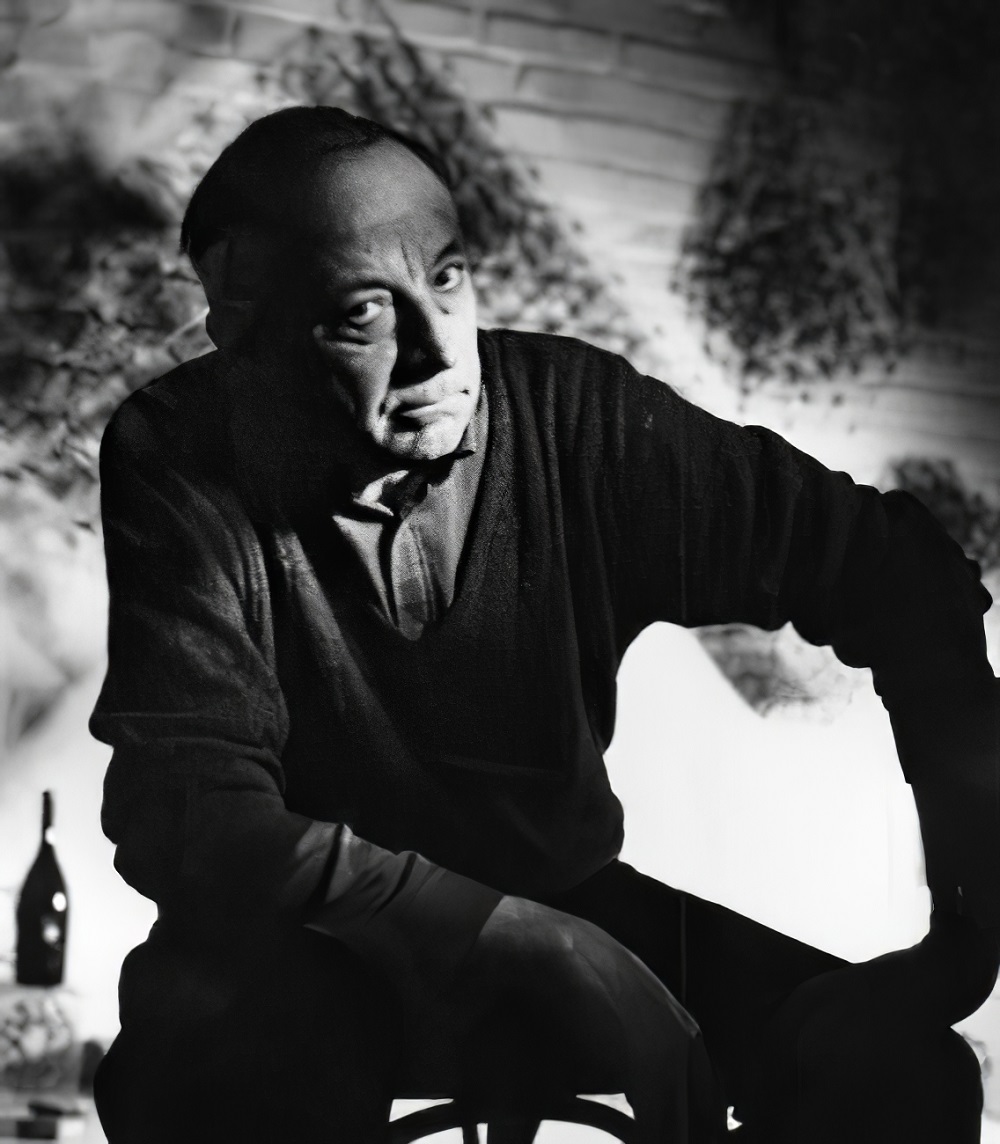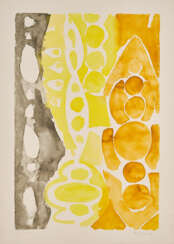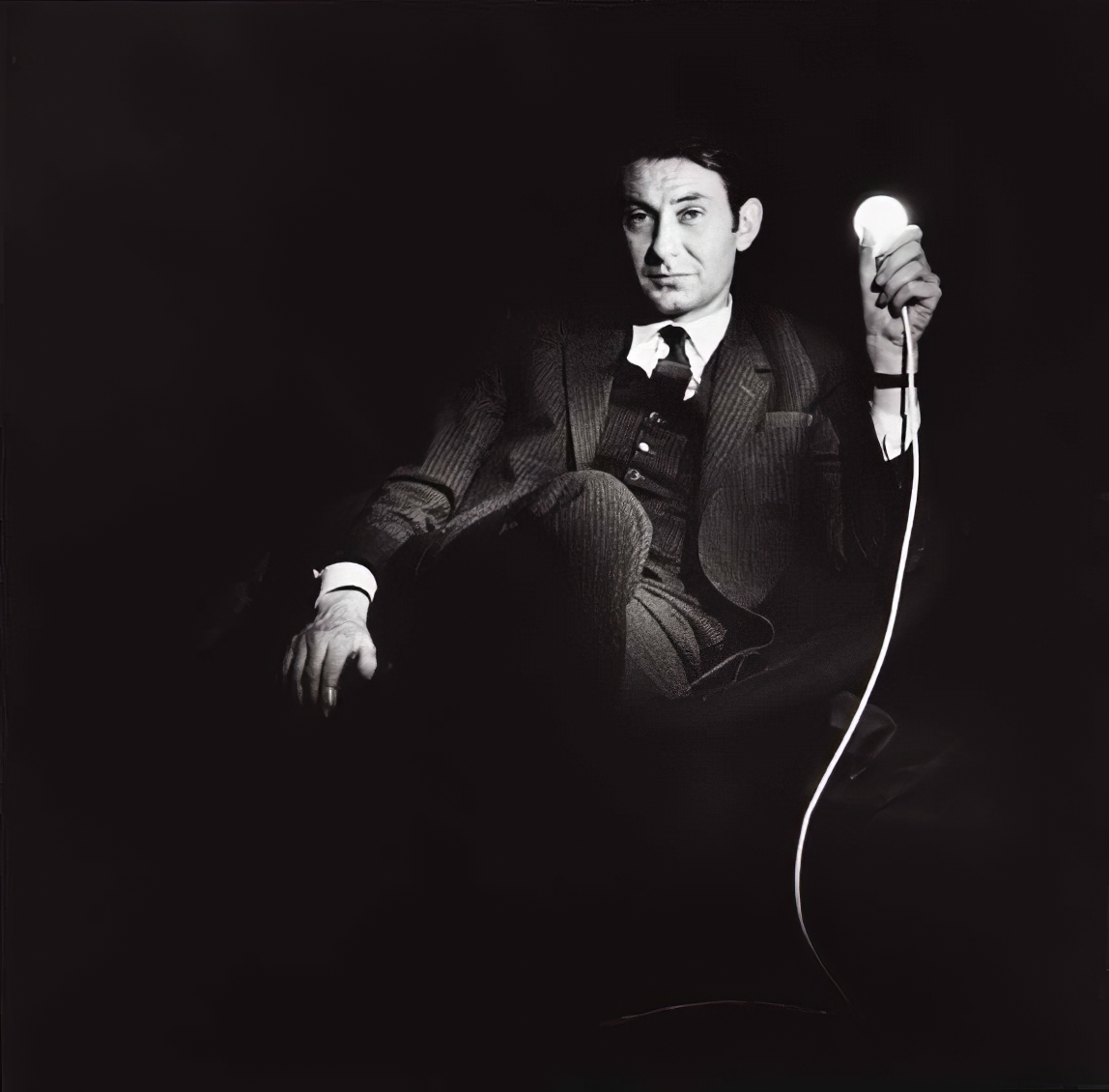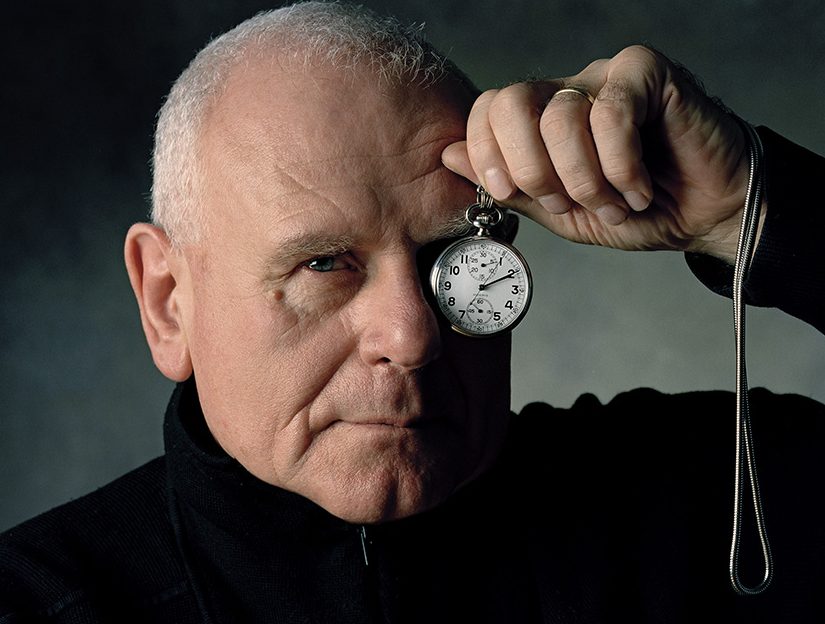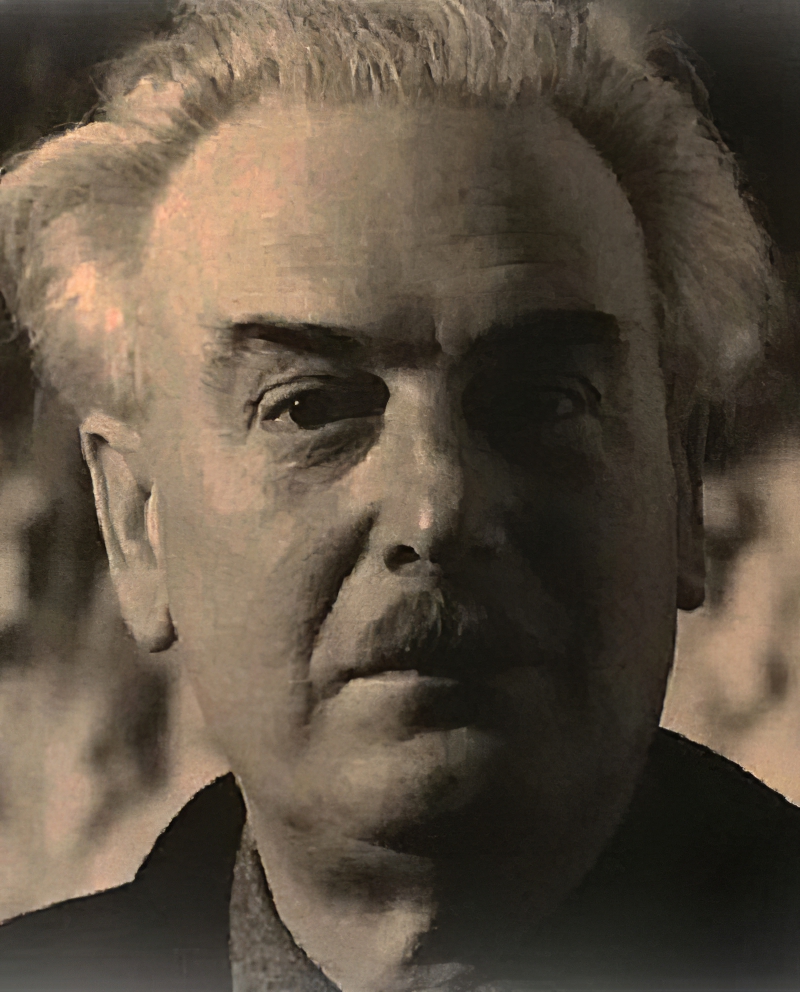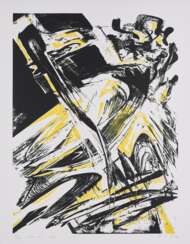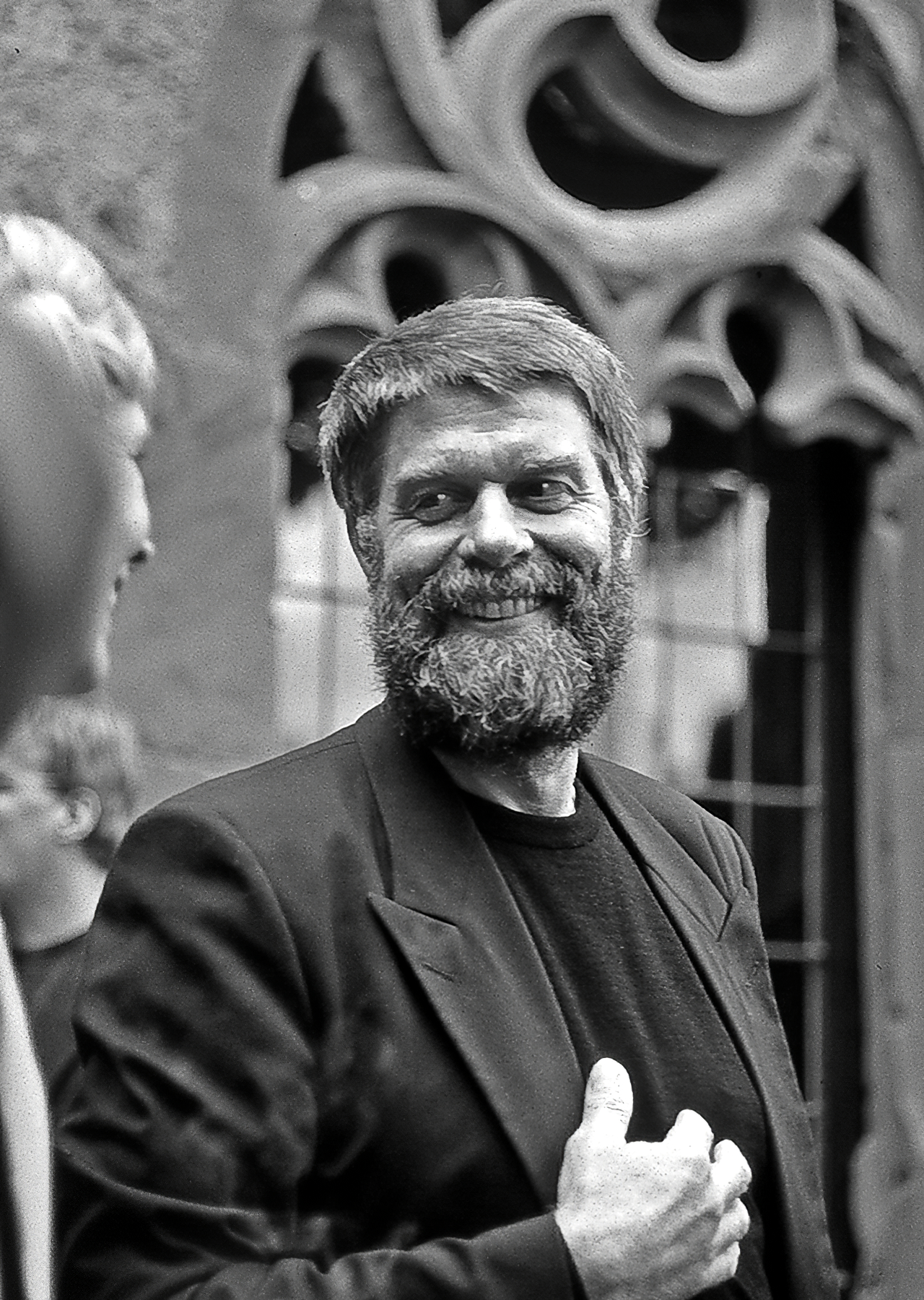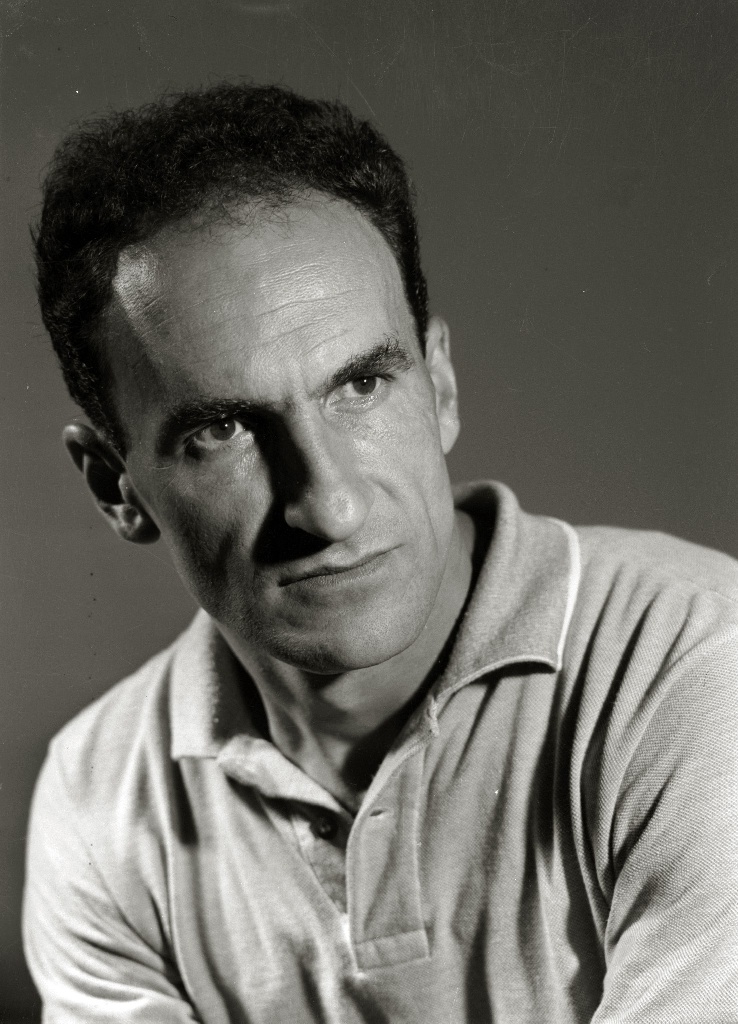
A1107 | Ways of Seeing Abstraction
Hermann Nitsch was an Austrian contemporary artist and composer. His art encompassed wide-scale performances incorporating theater, multimedia, rituals and acted violence. He was a leading figure of Viennese Actionism.
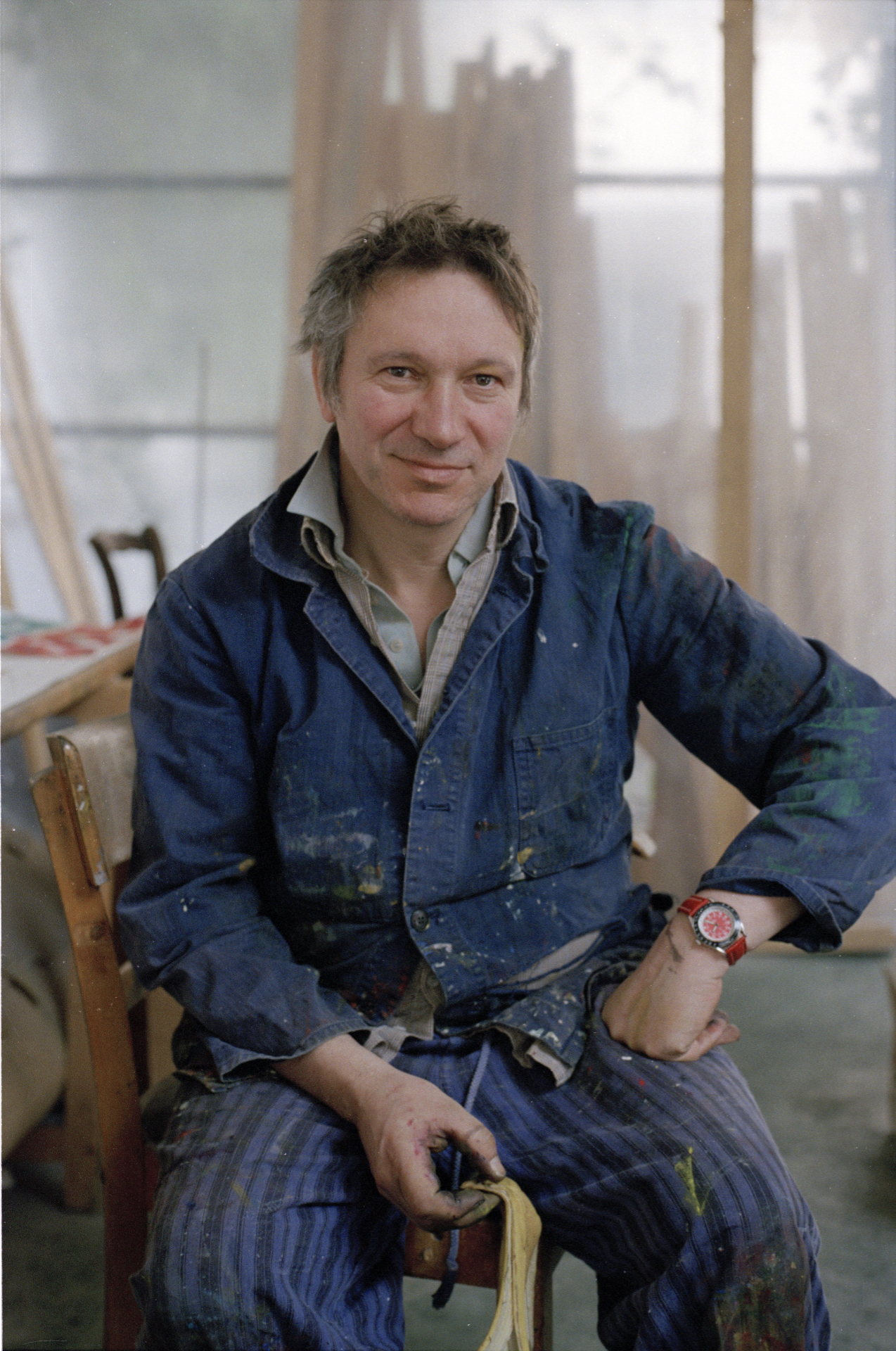
Norbert Prangenberg was an abstract painter, sculptor, and engraver. Though he had no formal training and did not fully engage with art until his 30s, Prangenberg did finally come up with a style that was uniquely his own, not fitting comfortably into the neo-expressionist or neo-geo movements of his time, in the 1970s and 1980s. At this time, he was considered a major figure in contemporary German art. Though he got his start with abstract paintings, he also became known for making sculptures of all sizes; and while his work initially appears abstract, the titles given sometimes allude to the human body or a landscape. As a trained gold- and silversmith, as well as a glassblower, he always showed an attention to materials and how they could be physically engaged with. He was interested in how his own two hands could affect the painting or sculpture's surface. Traces of the artist's hand appear literally throughout his entire oeuvre, before he lost the battle with liver cancer in 2012.

Norbert Prangenberg was an abstract painter, sculptor, and engraver. Though he had no formal training and did not fully engage with art until his 30s, Prangenberg did finally come up with a style that was uniquely his own, not fitting comfortably into the neo-expressionist or neo-geo movements of his time, in the 1970s and 1980s. At this time, he was considered a major figure in contemporary German art. Though he got his start with abstract paintings, he also became known for making sculptures of all sizes; and while his work initially appears abstract, the titles given sometimes allude to the human body or a landscape. As a trained gold- and silversmith, as well as a glassblower, he always showed an attention to materials and how they could be physically engaged with. He was interested in how his own two hands could affect the painting or sculpture's surface. Traces of the artist's hand appear literally throughout his entire oeuvre, before he lost the battle with liver cancer in 2012.
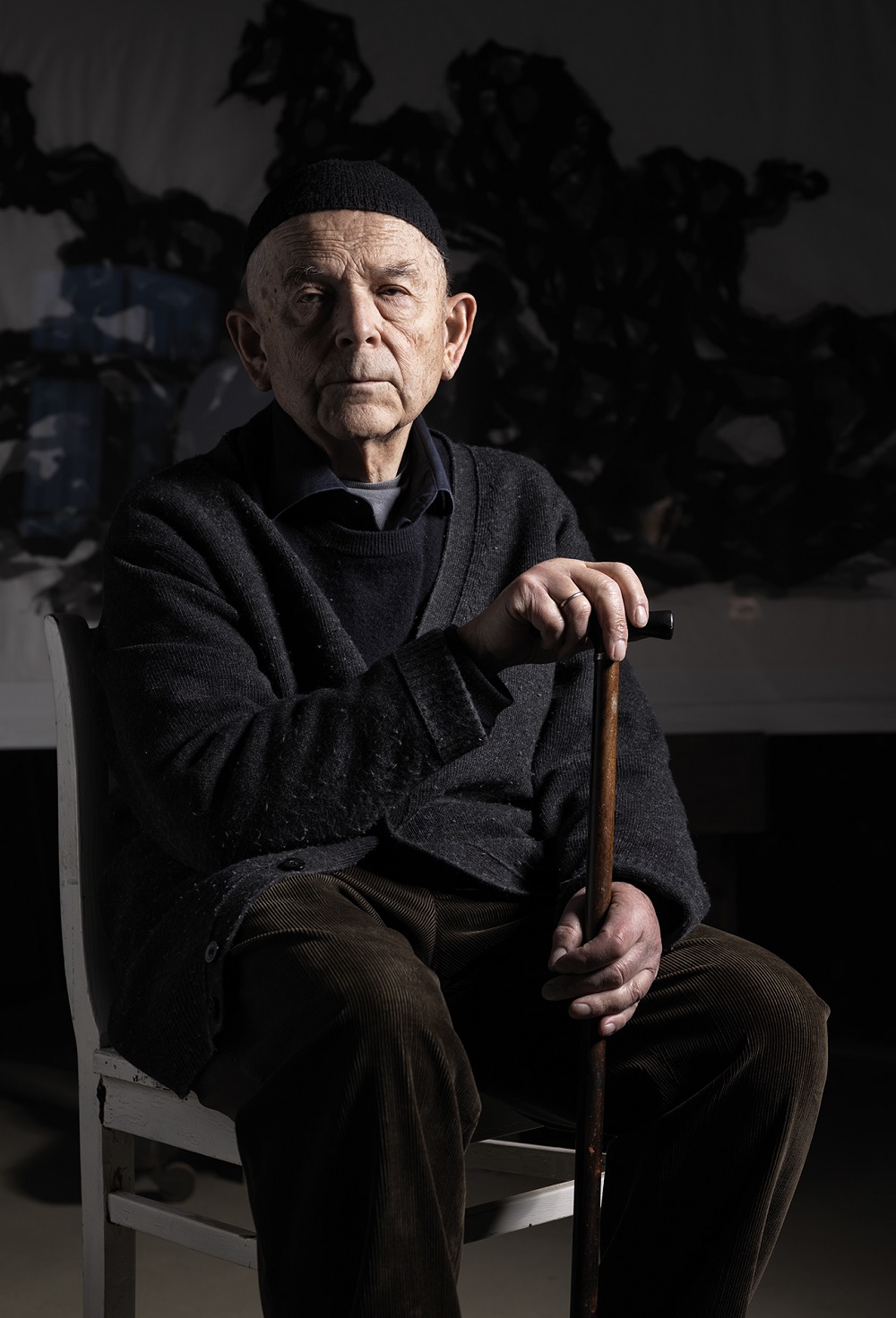
Max Uhlig is a German painter. He won the Hans Theo Richter-Preis of the Sächsische Akademie der Künste in 1998.
In 1978, Max Uhlig presented his characteristic paintings for the first time in the Dresden Kupferstichkabinett.
"Black and white or in colour, lines in the expressive rhythm of their superimposition draw the image mode and the conciseness of an extensive, unmistakable work that is a discovery. Today Max Uhlig is one of the last representatives of the era of open-air painting in modern art that began 150 years ago, but his work elevates it to the height of our time." His late work received significant impulses from annual stays in Faucon (southern France) from 1991 to 2010.
Max Uhlig has been a member of the German Association of Artists since 1990 and a founding member of the Saxon Academy of the Arts. From 1995 to 2002, he was the professor for painting and graphics at the University of Fine Arts in Dresden.
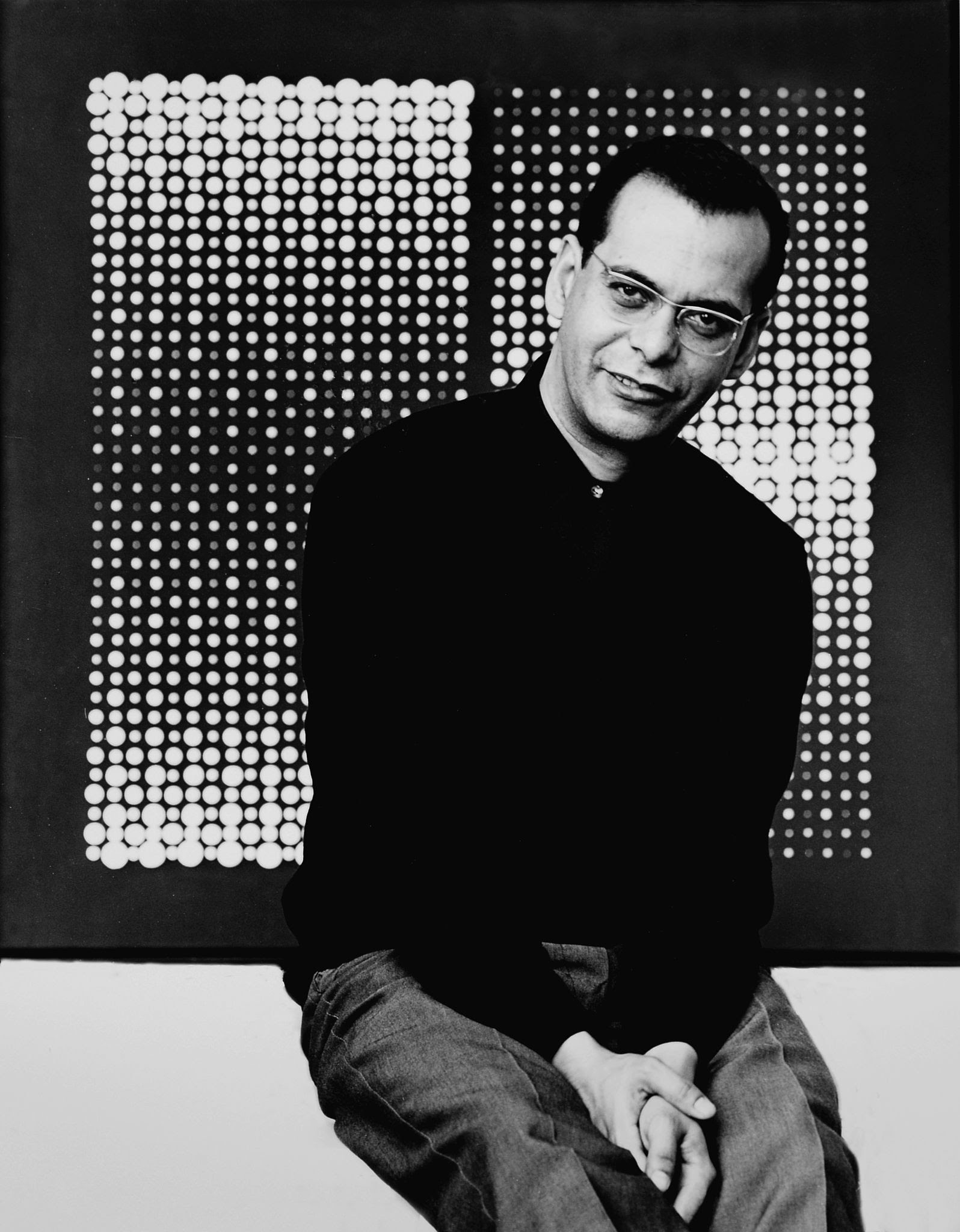
Almir da Silva Mavignier is a German painter and graphic designer of Brazilian origin.
Almir Mavignier is internationally known as an artistic representative of concrete art, op art and as a commercial artist.
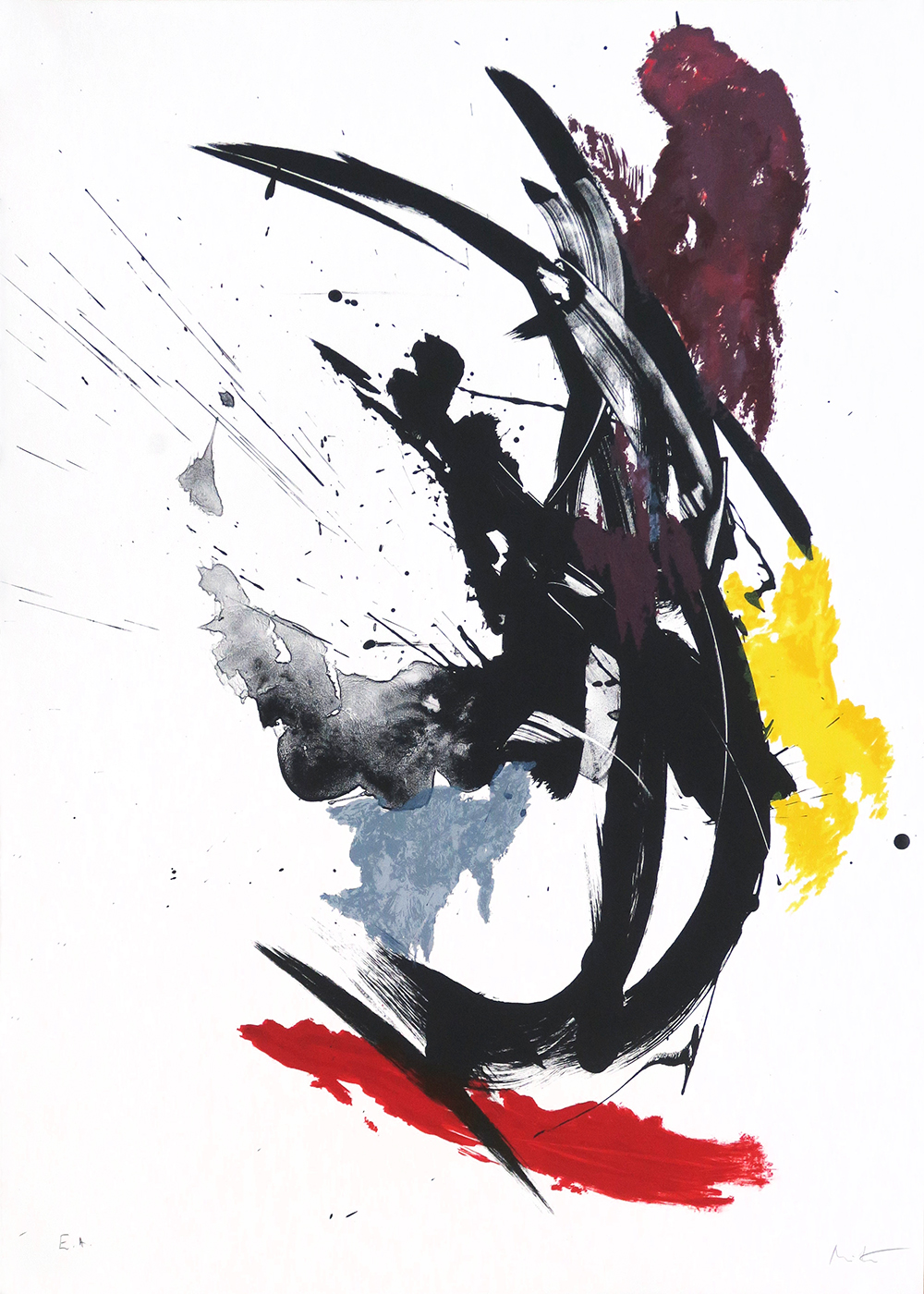
Jean Miotte was a French abstract painter, in the style known as L'Art Informel. His work was preserved and studied by the Miotte Foundation and is in the collections of museums including: MoMA and the Guggenheim in New York, Musée d'Art Moderne de Paris and Haus der Kunst in Munich.
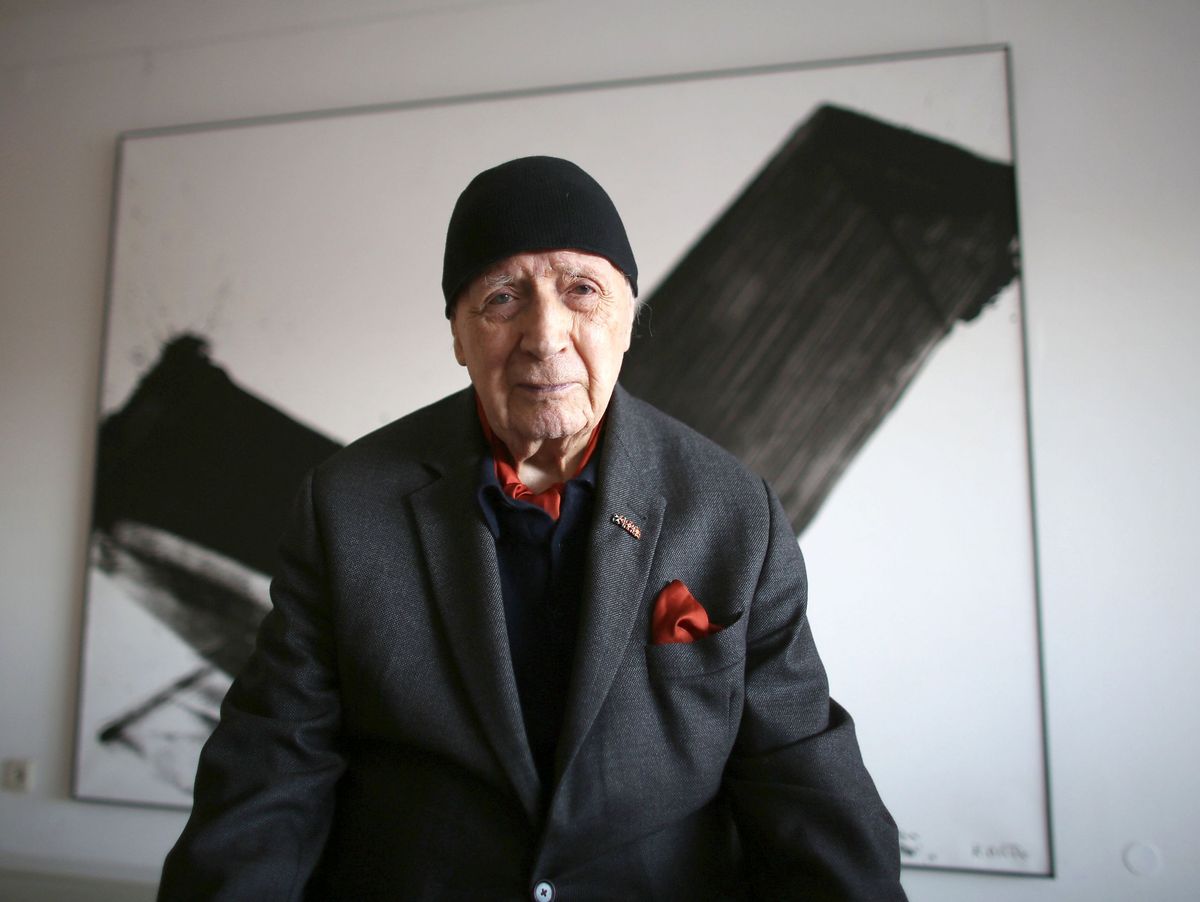
Karl Otto Götz was a German artist, filmmaker, draughtsman, printmaker, writer and professor of art at the Kunstakademie Düsseldorf. He was one of the oldest living and active artists older than 100 years of age and is best remembered for his explosive and complex abstract forms. His powerful, surrealist-inspired works earned him international recognition in exhibitions like documenta II in 1959. Götz never confined himself to one specific style or artistic field. He also explored generated abstract forms through television art. Götz is one of the most important members of the German Art Informel movement.

Karl Otto Götz was a German artist, filmmaker, draughtsman, printmaker, writer and professor of art at the Kunstakademie Düsseldorf. He was one of the oldest living and active artists older than 100 years of age and is best remembered for his explosive and complex abstract forms. His powerful, surrealist-inspired works earned him international recognition in exhibitions like documenta II in 1959. Götz never confined himself to one specific style or artistic field. He also explored generated abstract forms through television art. Götz is one of the most important members of the German Art Informel movement.
